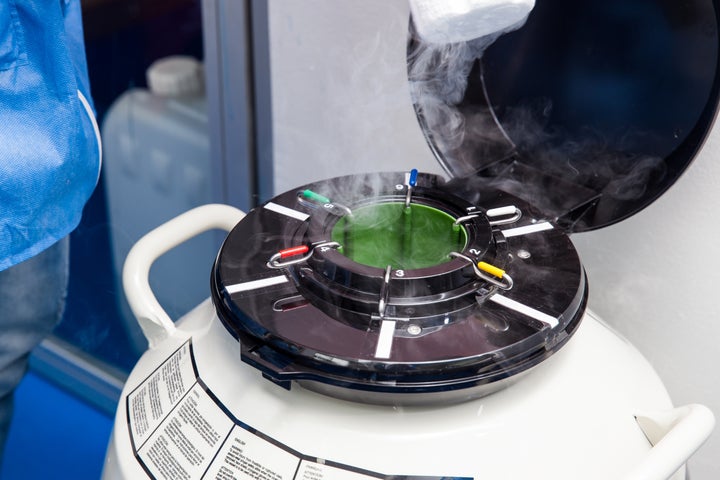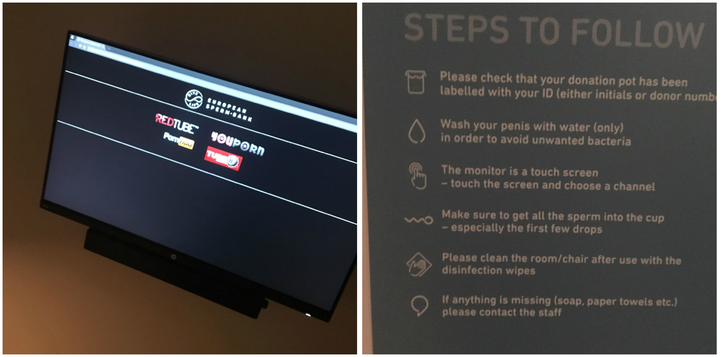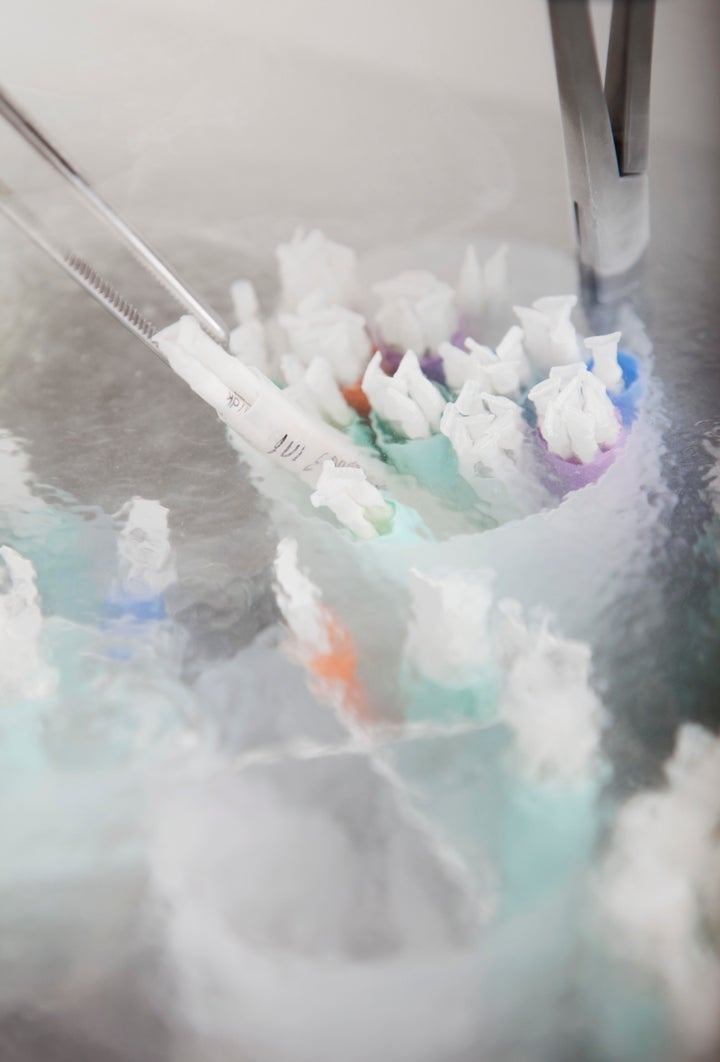
Every year, around 2,500 men and women in the UK have a baby with the help of a sperm donor. For many, using donated sperm is their one chance to fulfil the dream of having a family. But while the number of women using donated sperm is rising every year, the number of willing British donors remains low.
This is why the UK relies heavily on foreign sperm – recent figures show 3,000 sperm samples from Denmark alone were imported to the UK in 2017. But like all imports, these could be affected by Brexit next March if these thousands of samples are held at the border, unaccounted for by trade agreements.
Is this the hard Brexit dilemma we didn’t see coming? And if British men don’t step up and donate, will we see a drop in the number of babies born in the UK by sperm donor?
Exact figures are hard to grasp as men donate to a UK-wide network of fertility clinics, both NHS and private, licensed by the Human Fertilisation and Embryology Authority (HFEA). The HFEA released stats in 2008 showing that out of the 500 new donors they needed each year, they had just 307 new donor registrations between 2006-2008. Manchester Fertility, a private clinic in the north of England, tells us they currently have 9,000 vials of donor sperm in storage from over 200 sperm donors. Although it’s difficult to give a precise number of donors they need to keep up with demand, they also say a good estimate is 500 donors per year.
In a bid to encourage new donors, the European Sperm Bank – a private company collecting sperm at clinics around the continent – has opened a new branch in London. HuffPost UK visited to find out what motivates the men who do donate and the answers were wide ranging. Some men cited personal reasons, such as knowing people close to them who had trouble conceiving. Others did it for the money – donors receive up to £35 per visit to cover their expenses – while some men said they wanted to spread their genes.
For Sebastian, 31, from Denmark, he was motivated by a mix of these factors. “If I became a high-flying businessman and didn’t have time to have kids of my own, I like the idea of having some genetic heritage out in the world,” he tells HuffPost UK at the launch of the European Sperm Bank’s new London branch.
Sebastian has been donating sperm in Denmark since January 2014 at varying frequencies. At most, he donated three times a week. He liked the idea of “putting [a] mark on the planet”, he says, as well as the cash. But ultimately he was swayed by a cousin who experienced fertility issues: “I thought: if I could help people like her and solve those sorts of problems, then I’ll go for it.”

The sperm donation process varies clinic by clinic. The European Sperm Bank branch we visited has a collection of dimly-lit small rooms – each with a chair, sink and TV. Donors have the choice of four porn sites to watch, including RedTube and PornHub, and there are instructions on the wall guiding them to wash their penis, ensure all the sperm goes into the pot, and to clean the room and chair after use.
Men stay in the room “as long as they need”, we’re told. When finished, they give their pot to staff and their sperm is analysed in a laboratory to check it’s high-enough quality to be used in fertility treatments.

Liv Thorne, 39, from Oxford, who gave birth to her baby son Herbert via sperm donation earlier this year, used Danish sperm to conceive, but only because of the lack of options in the UK. “It would have made a huge difference to have a UK donor,” she says, adding that it’s not only for ease but because it would reduce the cost of shipping sperm over from a different country.
“The pool here is so small and you get such limited information that it just felt like so much more of a lottery,” she adds. “I needed more than just height, weight, eye colour and four people to choose from. If the pool had been bigger and you got more info, I’d definitely have gone for a UK donor.”
So why aren’t they donating? In 2014, to tackle the shortage of donors in the UK – particularly at NHS clinics – a national sperm bank serving the UK opened in Birmingham with a government grant of £77,000. Less than two years later, the bank had closed its doors and stopped recruiting donors. Just nine had been recruited since its launch, with one of those later dropping out.
Sue Avery, who has been involved with sperm donation since the early 1980s, and is director of the Birmingham Women’s Fertility Centre, believes the problem was the messaging, with the website promoting the sperm bank suggesting that donors were “very special men”.
“It was disappointing,” says Avery. “There are British men who are happy to donate sperm, but they are not motivated by a need for acknowledgement.”
The bigger issue seems to be a widespread fear among men that any children “fathered” from their donated sperm will one day come knocking on their door.
This, believes Annemette Arndal-Lauritzen, CEO of the European Sperm Bank, is the real reason British men are so reluctant to donate. In 2005, a change in UK law directed that any child conceived with the help of a donor can ask for their donor’s name, date of birth and last known address when they turn 18. The legislation is intended to give children the chance to out who their biological father is if they wish to as an adult. It also means that no British man who chooses to donate sperm at a clinic can remain anonymous.
There are different laws in different European countries – in Belgium, all donors recruited are kept anonymous. In Denmark, men have a choice to be an “open” or “closed” donor – meaning they can choose whether they remain anonymous or not – although less than two per cent of donors to the European Sperm Bank in Denmark have kids who come back to ask their identity.
Open donation wasn’t a concern for Sebastian. One of his high school friends was born by donated sperm and her father chose to be a closed donor. “It has been a great struggle for her to find out about her heritage and her father, and caused a lot of arguments with her mother,” Sebastian says. “So if I can minimise or remove those issues within the family, then I’m all for it.”
He says as soon as he told this friend he was becoming a donor, she asked: “Open or closed?” and when he answered open, she hugged him.

Sue Avery believes the 2005 change in law in the UK, as well as restrictions on levels of payment, has had an impact on men willing to donate. The UK law prohibits payment for sperm donation, however clinics can offer donors a compensation fee of up to £35 per donation appointment. In other countries, such as the US, the donor payment varies and is often a lot higher.
Dr Lucy Buckley, from Dr Fertility, a fertility information resource site, agrees: “I believe the decline of UK sperm donors is largely due the change in law, so children conceived by donor sperm are now able to access a lot more information about their donor. Sadly though, many men still feel discouraged from donating because they fear there will be a knock at the door one day.”
In Birmingham, Avery receives new enquiries every week from men interested in donating sperm. The challenge, she says, is converting these to active donors. “Local campaigns are, in my experience, more likely to succeed,” says Avery –as does targeted social media, in particular Facebook.
“Where we have a real problem is in finding donors for people from certain ethnic and religious background,” she adds. “What we really need is some targeted raising of awareness, but it has to be done sympathetically, and with an understanding of the issues.”
And while men may not be queuing up at clinics to donate, numbers are slowly rising. The London Women’s Clinic (LWC), established in 2003 when there was already an acute shortage of donated sperm, had 72 donors on its books in 2008, after five years of recruiting. Now, it has more than 1,000. This may also be down to the fact that in 2010, the LWC partnered with the newly-launched London Sperm Bank (LSB) to increase sperm donations, which have led to the creation of hundreds of families.
“The problem has always been awareness,” says Dr Gili Band, LWC’s lab and sperm bank manager. “Men aren’t educated enough about infertility to know that they can help out in this way so once we start informing them of the difference they make in people’s lives, there are actually a huge number of guys who would want to help. We currently receive nearly 400 new inquiries per month and due to Brexit we would welcome more.”
